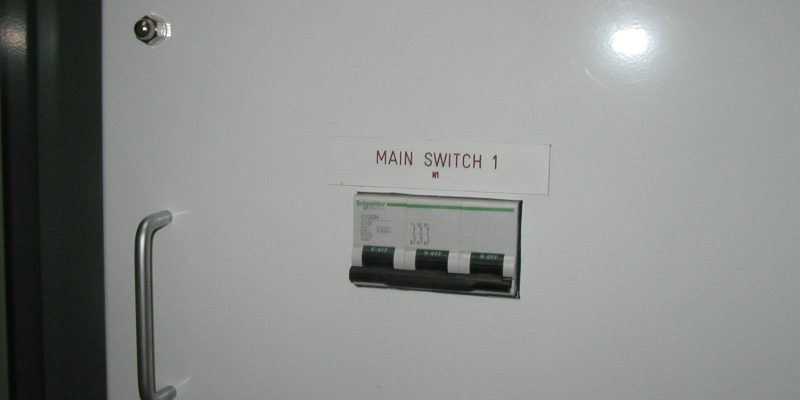Switchboards are fundamental components in electrical systems, acting as central hubs for power distribution and control. However, there’s often confusion about whether a switchboard requires a main switch and its purpose within the electrical setup.
What is a Main Switch?
A main switch, or a main circuit breaker, is a vital component in an electrical switchboard. It serves as the primary control point for disconnecting power from the entire electrical system, effectively isolating the switchboard and all connected circuits from the power source.
Aspects of a main switch:
Disconnecting Power: The main switch is designed to disconnect the power supply to the switchboard and its associated circuits. It acts as a master control device that turns off electrical power in case of emergencies, maintenance, or safety shutdowns.
Safety Function: One of the primary functions of a main switch is to enhance electrical safety. By providing a means to isolate power locally, the main switch allows for safe maintenance, repairs, or inspections of electrical equipment without the risk of electrical shocks or hazards.
Compliance with Regulations: Many electrical codes and standards, such as the Australian and New Zealand Standards (AS/NZ 3000), mandate the installation of a main switch in switchboards. This requirement ensures compliance with safety regulations and facilitates the safe operation and maintenance of electrical systems.
Emergency Response: In emergencies, such as fires or electrical faults, the main switch enables quick and efficient power shutdown to prevent further damage, minimize risks, and facilitate emergency response efforts.
Does a Switchboard Need a Main Switch?
The necessity of a main switch in a switchboard depends on several factors, including the size of the electrical installation, the presence of sub-switchboards or distribution panels, and regulatory requirements.
Considerations regarding the need for a main switch:
Single Switchboard Setup: In a small-scale electrical installation with only one switchboard serving as the main distribution point, a main switch is typically required. It provides essential safety features and control capabilities for the entire system.
Multiple Switchboards or Distribution Panels: In larger installations with multiple switchboards or distribution panels, each switchboard may have an individual main switch. This decentralised approach allows for more granular control and isolation of specific circuits or sections within the electrical system.
Regulatory Compliance: Compliance with electrical codes and standards often dictates installing a main switch in switchboards to ensure adherence to safety requirements and industry best practices.
Safety and Maintenance: Even if not mandated by regulations, installing a main switch in a switchboard enhances safety, facilitates maintenance procedures, and provides emergency shutdown capabilities, making it a valuable addition to any electrical system.
In conclusion, a main switch plays a critical role in switchboards by providing a means to disconnect power from the entire electrical system. While the necessity of a main switch may vary based on installation size, regulatory requirements, and safety considerations, its presence significantly enhances electrical safety, enables efficient maintenance procedures, and ensures compliance with industry standards. Whether it’s a single switchboard setup or a complex electrical installation with multiple switchboards, incorporating a main switch is a proactive measure contributing to the electrical system’s reliability, safety, and functionality.

